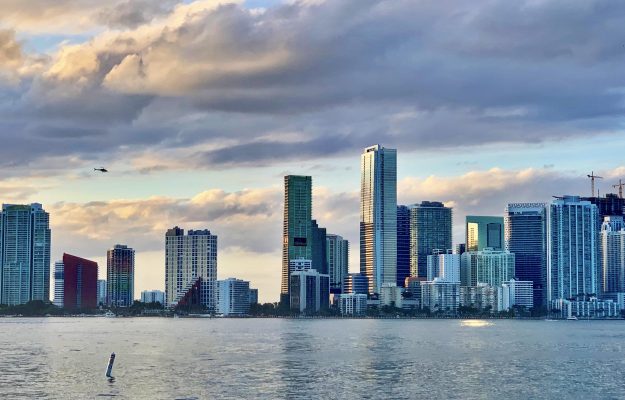The Italian wine situation on the US market seems a little less gloomy in Florida, the “Sunshine State”, the third largest State population-wise and the second for wine consumption. The dark cloud looming above; that is, the tariffs on wine and other Made in Italy products in the agri-food sector, which President Trump periodically re-launches, is still definitely there, but it is a little less threatening now. The reason is that although the importers that WineNews talked to in Miami during the first leg of the Simply Italian Great Wines Americas Tour 2020 (the second will be in Mexico City, on February 6th) organized by IEM - International Exhibition Management, headed by Marina Nedic and Giancarlo Voglino, are still hesitating about expanding their own product portfolios, as they still feel the burn from the 25% tariffs imposed on French, Spanish and German products, the numbers, instead are for the most part, stable.
As a matter of fact, and according to New York’s ICE data, in the first eleven months of 2019, shipments of agri-food products and Made in Italy beverages reached 5 billion US dollars (4.96 billion US dollars), up +5. 5% compared to the same period in 2018. There were two relevant data. On one hand, there was a slight drop in wine (-0.5%), down to 1.81 billion euros, but substantially stable, while on the other, the boom in the cheese sector increased by +20.3%, pushing the value up to 352 million US dollars because of the proposal of duties at 25%, confirmed on October 17th. So, this is the right place to start over to face the coming months in a more serene way, because new duties being imposed is only hypothetical, as 100% of the value is the worst possible scenario and also very difficult to achieve.
Of course, we are going to still have to play it by ear, because the Trump Administration’s actions are difficult to predict. It thrives on extreme announcements, rash actions and sudden braking, but don’t think that Italy is simply watching. Diplomatic action is fervently working out of the spotlight and is in fact more active than ever. ICE - Institute for Foreign Trade, responded to the duties on cheeses, cold cuts and spirits with a full calendar of promotional, and not only, initiatives supporting the product sectors affected. And, there is an enormous difference between cheese and wine. Competition with the Wisconsin dairy industry - a very important group of votes for Trump, especially in this election year - is very strong, but the wine market is centered on very different dynamics. First of all, US production is not even remotely sufficient to cover domestic consumption, and then, the substitute effect is very challenging, as just thinking about importing an Argentine wine instead of a Tuscan wine, for instance, is indeed difficult to imagine.
The joint action of the wine supply chain, as importers and distributors have pointed out, from importers to caterers, seems to have made an impact by means of an actually simple message - tariffs on wine are bad for business, at all levels, and the risk would be thousands of jobs lost, which Trump and the American people are particularly sensitive to. Moreover, what is happening with French wine should be a warning for everyone, and not only wine, so much so that on February 9th the association “One American March” has organized a demonstration, which will gather in front of the White House, in Washington, to ask for a stop on introducing taxes on all products (“Stop the tariffs”). Going back to French wine production, the tariffs at 25% have already brought an evident and drastic slowdown in imports. And, it must be pointed out that since the previous vintages are still on the shelves, it is practically impossible for the wines just released to stay on the market; therefore, the real and effective impact will only be felt in a few months’ time. Regarding Italian wine, however, its real strength is once again its uniqueness, as Ervin Machado, beverage manager of the Big Time Restaurant Group explained to WineNews (15 bars in the US and more than 30 million US dollars a year in wine turnover), “Tuscany is the best example because its production pyramid is able to satisfy all price ranges, from Chianti to Brunello. As far as I am concerned, I am convinced that Italian wine will come out of the duty issue unscathed”.
Copyright © 2000/2025
Contatti: info@winenews.it
Seguici anche su Twitter: @WineNewsIt
Seguici anche su Facebook: @winenewsit
Questo articolo è tratto dall'archivio di WineNews - Tutti i diritti riservati - Copyright © 2000/2025









































































































































































































